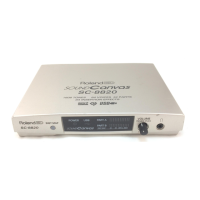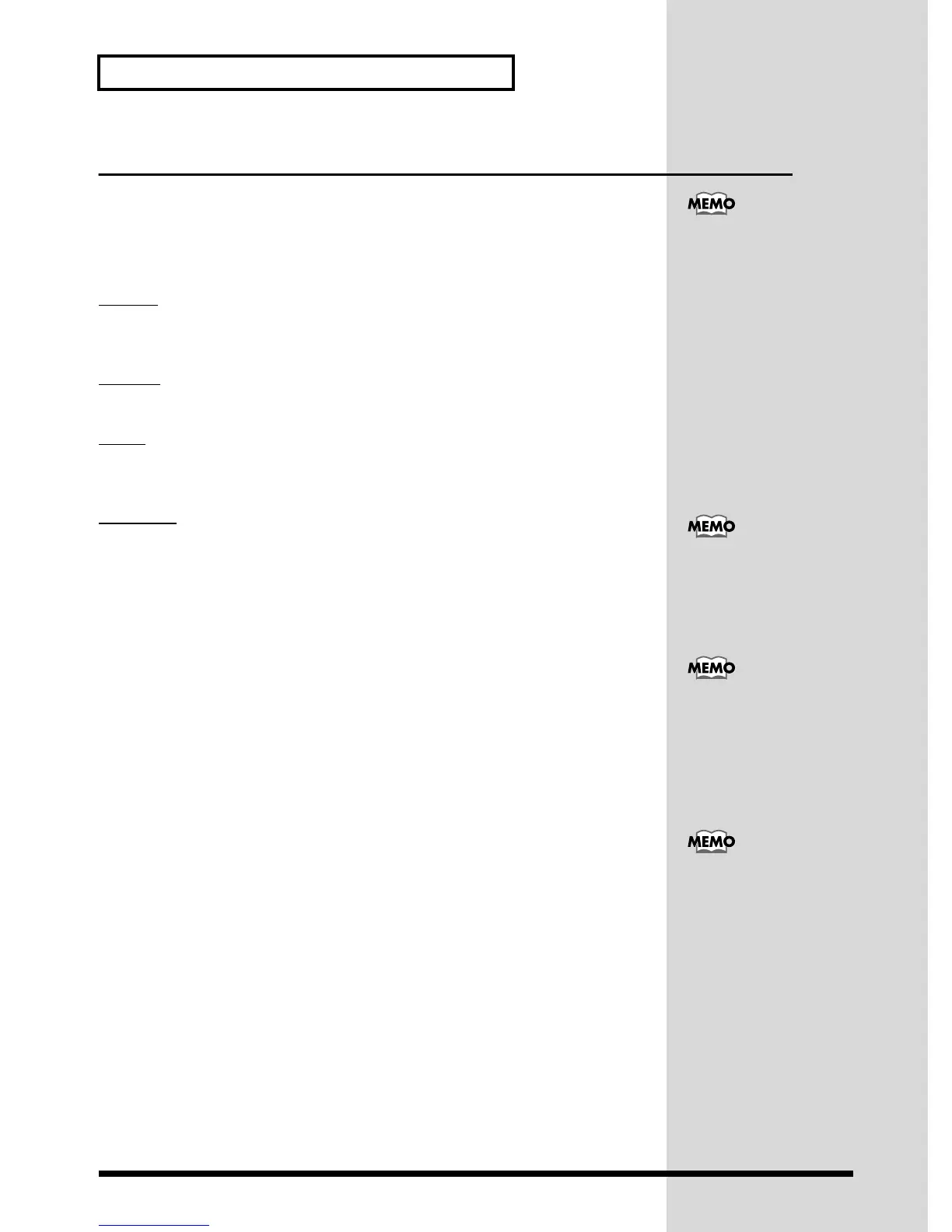40
Effects
System Effects
The System effects of the SC-8820 include 8 types of reverb and chorus, and 10 types
of delay. In addition, for each of these effects you can specify parameter values such
as character, depth, rate, and time. For these effects, you can set the overall level for
all Parts and also individual levels for each Part.
Reverb
Reverb is an effect that adds reverberation to a sound, as you would hear in a concert
hall.
Chorus
Chorus broadens the spatial image of the sound, adding depth and richness.
Delay
Delay creates echoes. It is also possible to give depth and width to a sound by adding
a short delay to the original sound.
Equalizer
An equalizer lets you boost or cut specified frequency ranges of a sound to adjust the
tone. The SC-8820 has a two-band equalizer (high range, low range). For each range,
high and low, you can specify the frequency and the amount of boost or cut (gain).
■ Reverb Parameters and Their Functions
■ REVERB MACRO (Reverb Macro)
You can choose from 8 types of reverb.
Room1 Room2 Room3
These reverbs simulate the reverberation of a room. They provide a well-defined
spacious reverberation.
Hall1 Hall2
These reverbs simulate the reverberation of a concert hall. They provide a deeper
reverberation than the Room reverbs.
Plate
This simulates a plate reverb (a studio device using a metal plate).
Delay
This is a conventional delay that produces echo effects.
Panning Delay
This is a special delay in which the delayed sounds move left and right. It is ef-
fective when you are listening in stereo.
■ REVERB LEVEL (Reverb Level) 0–64–127
This parameter sets the amount of the reverberant sound. Higher values result in
louder reverberation.
■ REVERB CHARACTER (Reverb Character) 0–4–7
This parameter selects the type of reverb. 0–5 are reverb effects, and 6 and 7 are delay
effects.
■ REVERB PRE-LPF (Reverb Pre-LPF) 0–7
A low pass filter can be applied to the sound coming into the reverb to cut the high
frequency range. Higher values will cut more of the high frequencies, resulting in a
more mellow reverberation.
For settings for each Part,
this will be the Send Level.
For the procedure of setting
the Equalizer on/off, refer
to Part EQ (Part
Equalizer) (p.27)
When you change the
Reverb Type, the following
parameter values will
automatically change. For
details, refer to About
Reverb Type (p.41).
To apply the reverb effect
to a part, you have to set
the send level for the part.
(p.27)

